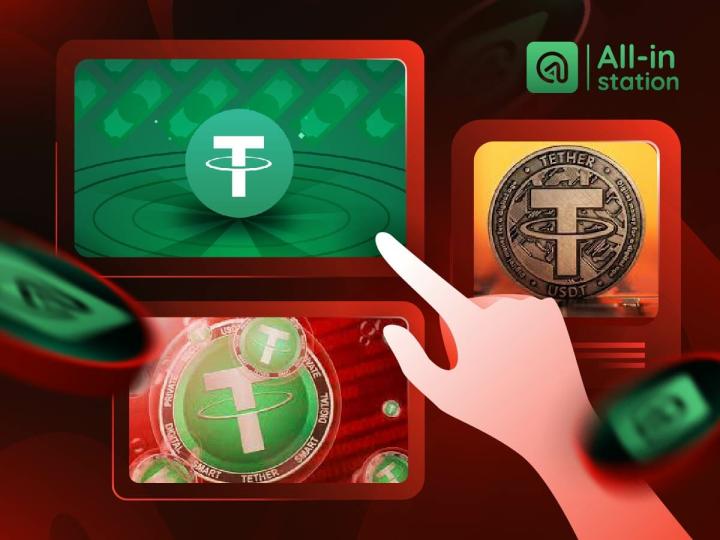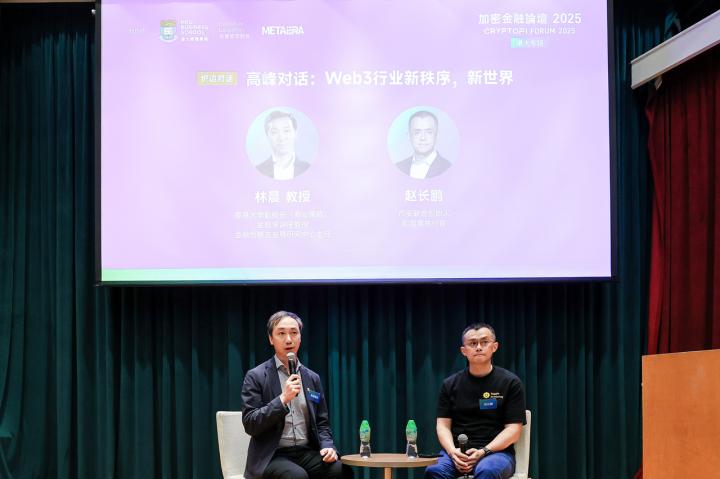The U.S. Department of Commerce has announced a landmark initiative: partnering with blockchain data provider Chainlink to bring six key macroeconomic indicators published by the U.S. Bureau of Economic Analysis (BEA) directly to the blockchain.
These data include gross domestic product (GDP), personal consumption expenditure (PCE) price index, and domestic private sector final sales. They not only involve the overall size and growth of the economy, but also reflect inflation and consumption trends. They are widely regarded as the most core indicators in macroeconomic analysis.

Technically, data will be uploaded to blockchain via Chainlink Data Feeds, initially covering ten major public blockchains, including Ethereum , Arbitrum , Optimism , and Avalanche . The emerging Python Network has also been selected to distribute and verify some economic data. In other words, for the first time, the U.S. government is entrusting its core economic data to decentralized infrastructure.
This news was widely interpreted by the industry as institutional endorsement. Previously, the interface between blockchain and the real economy was mostly private projects or experimental explorations. This official push for data on-chain marks the beginning of blockchain's transition from a "closed system for crypto-finance" to a "public data layer" serving the broader economic system.
The market sensed the changes in advance
In fact, the price trends in the oracle sector have already signaled this. Chainlink (LINK) has been rising steadily since late July, with a cumulative monthly gain of over 40%, significantly outperforming mainstream assets like Ethereum. Following the announcement, Python (PYTH) became a market focus, surging over 50% intraday and surpassing the $1 billion market capitalization mark for the first time.


In comparison, other second-tier projects such as Band Protocol , UMA , API3 , RedStone , etc., also recorded rebounds to varying degrees, but the scale and growth rate were far less than LINK and PYTH.
This trend is no accident. With the growing popularity of RWAs (Real World Assets) and governments openly collaborating with oracles, investors' risk appetite is shifting toward infrastructure tokens. In a new market cycle, oracles may regain their central position as a "must-have" in a bull market.
Use case expansion: more than just a tool
For a long time, oracles have often been regarded as the "behind-the-scenes assistants" of blockchain systems.
During the DeFi boom of 2020–2021, oracles' primary mission was price feeds: they transmitted price data from off-chain exchanges to the blockchain for use in lending, liquidation, and derivatives contract settlement. Almost all lending protocols, decentralized exchanges, and synthetic asset platforms rely on oracles. However, this role made them somewhat invisible, unlike exchanges or popular applications.
The U.S. Department of Commerce’s data being put on the blockchain has changed this positioning. For ordinary investors, this may directly change the “usefulness” of blockchain.
For example, if future bonds or savings products can be directly anchored to PCE inflation data, then the on-chain wealth management products purchased by individual users will be truly synchronized with the real economy. Furthermore, the on-chain integration of GDP data could foster the creation of derivatives or structured products tied to economic growth, similar to "GDP options" or "inflation-hedged bonds." These financial instruments are complex to design and cumbersome to operate in traditional markets, but smart contracts on blockchains can be implemented at a much lower cost.
Furthermore, prediction markets will undergo a qualitative transformation. In the past, prediction markets often lacked authoritative data sources, resulting in limited credibility. Now, prediction contracts based on official economic indicators will not only attract wider participation but also serve as a supplementary tool for policy and market research. For scholars, the media, and even the government itself, these markets could become a veritable "sentiment thermometer."
Another potential use case is risk management. For example, stablecoin issuers or DeFi protocols could leverage real-time inflation and GDP data to dynamically adjust interest rates, collateralization ratios, and reserve ratios. In other words, macroeconomic factors would be directly embedded into the operational logic of on-chain protocols, making the entire crypto-financial system more resilient to risk.
These application scenarios demonstrate that oracles are no longer just tools for DeFi; they are becoming the interface between real-world data and the on-chain world. As more government and institutional data is moved onto blockchains, the importance of this interface will continue to grow.
Pattern: One superpower, one strong, long-tail testing the waters
Judging by market capitalization, the oracle sector is highly concentrated. Chainlink , with a market capitalization of approximately $16.6 billion, holds over 70% of the entire sector, making it the undisputed leader. It has long become a standard feature of DeFi applications, and its collaboration with the US government has further solidified its position in the industry.

Pyth has emerged as a "strong second" in the past year. Leveraging its advantages in high-frequency financial data and cross-chain distribution, Pyth has rapidly gained users within the exchange ecosystem. Now officially endorsed, Pyth has significantly increased market interest in it. While its market capitalization is only one-tenth that of LINK, its rapid growth and ecosystem expansion capabilities make it the only upstart with a chance to challenge the existing landscape.
The long tail includes projects like Band, UMA, API3, and RedStone. These tokens generally have market capitalizations in the $100-200 million range, primarily serving as ecosystem supplements. For example, Band once had a presence in the Asian market, UMA focused on the "optimistic oracle" model, and RedStone explored modular data services. However, their size makes it difficult for them to play a decisive role in the broader landscape. When considering investments, investors often view them as "marginal opportunities" rather than core sectors.
This "one superpower, one strong player, and a long-tail testing the waters" landscape has actually intensified the concentration of capital. Market attention and funding are rapidly focusing on Chainlink and Python, creating an "oligopoly effect" similar to that in traditional tech sectors.
A victory for the integration of politics and business?
This collaboration goes beyond technology. Chainlink has long been deeply involved in compliance and policy communication, having engaged directly with the SEC and the Senate Banking Committee. Pyth also acknowledged months of close communication with the Department of Commerce team. Obtaining access from the US Department of Commerce requires more than just code and nodes; it also requires political connections and compliance capabilities.

Commerce Secretary Howard Lutnick has publicly stated his commitment to making U.S. economic data "immutable and globally accessible." This statement is both a recognition of blockchain and a reinvention of the American data governance model. In other words, blockchain is no longer a "disruptor" but rather a "tool" incorporated into the government's governance framework.
Does this mean that only projects that integrate government and business will succeed in the future? At least in the field of oracles, the answer seems to be yes. Accessing core real-world data requires navigating the barriers of government and institutions. On-chain experiments can be ignited by market sentiment, but to scale, they must have institutional backing.
Investment Implications
This resurgence in oracle popularity differs from previous hype. It stems from a combination of real-world demand, official recognition, and capital logic. Chainlink is as solid as infrastructure, while Python is a rising force thanks to its speed and momentum. For investors, oracles are no longer just "behind-the-scenes players in DeFi" but an integral part of the global data ecosystem.
For this reason, the market may increasingly favor projects that can bridge the gap between policy and business. No matter how advanced the technology, without institutional support, it may still struggle to implement. However, projects that can secure official backing have the potential to become long-term winners.
The resurgence of oracles may be a turning point for blockchain to move from narrative to reality.
Twitter: https://twitter.com/BitpushNewsCN
BitPush TG discussion group: https://t.me/BitPushCommunity
Bitpush TG subscription: https://t.me/bitpush







